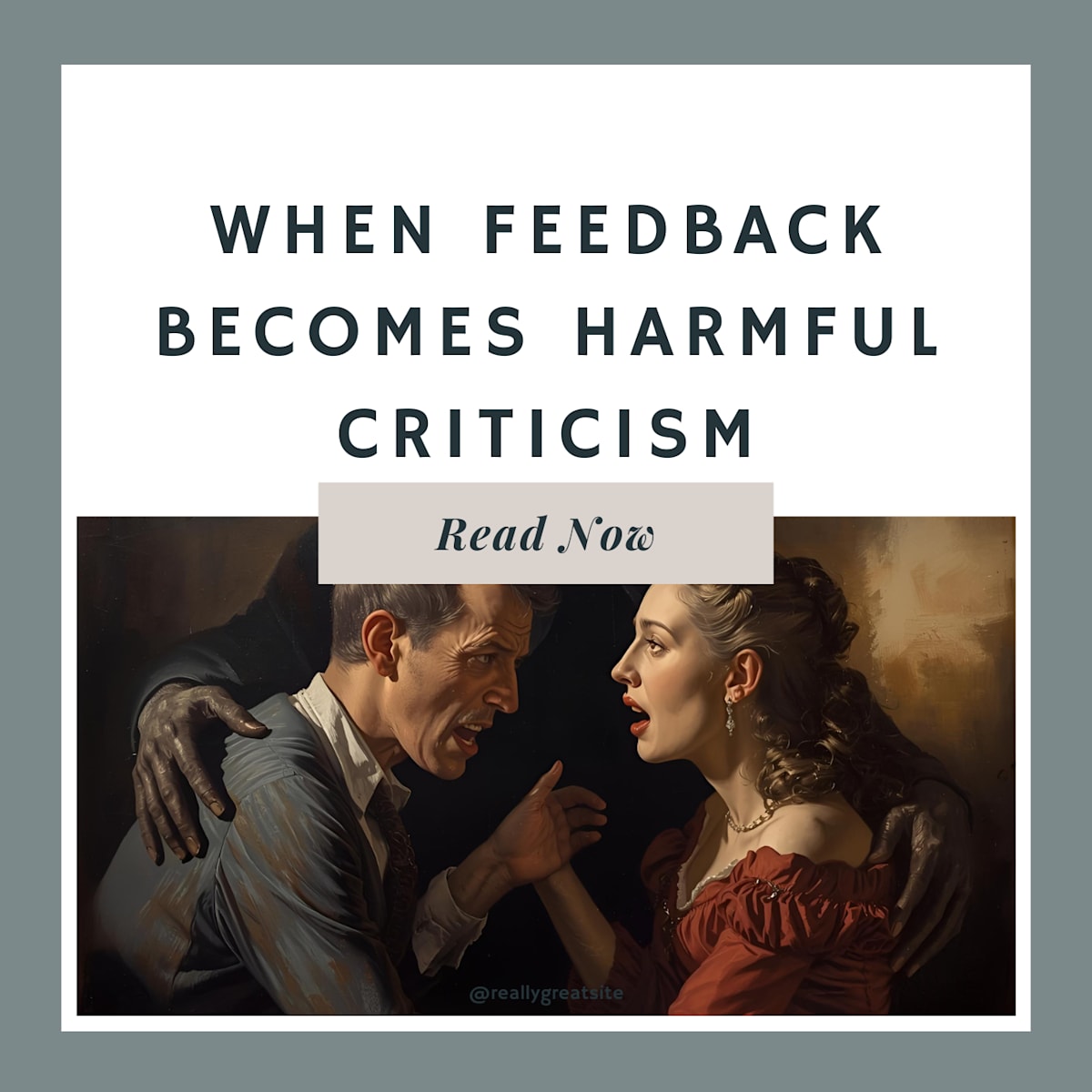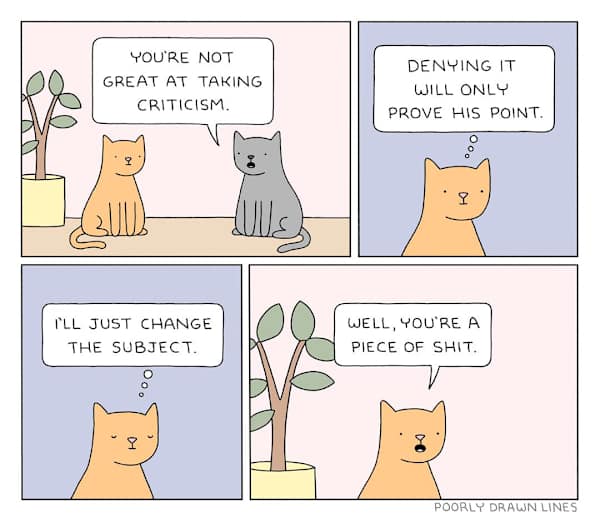Dr. John Gottman identifies criticism as a strong predictor of divorce. Yet to improve, we need feedback. So where is that line where feedback becomes harmful to relationship?
Quick rule of thumb
If your words attack identity, assume motives, or leave the other person with less clarity, less dignity, and no clear next step, you’ve crossed the line.
Red flags: you’ve crossed it
- Permanent, personally defining labels: “You’re lazy / incompetent / selfish” (attacks who they are, not what happened).
- Mind-reading motives: “You don’t care,” “You did this to make me look bad.”
- Absolutes: “You always… / You never…”
- Contempt signals: sarcasm, eye-rolls, mockery, name-calling, public call-outs.
- Kitchen-sinking: piling on multiple past grievances in one go.
- Comparisons & shaming: “Why can’t you be more like Sam?”
- Bad timing: raising it when either of you is flooded, exhausted, or in front of others.
- Scorekeeping / punishment: repeating the same gripe to hurt or “teach a lesson.”
- No path forward: complaints without a request or specific change.
The C.R.O.S.S. test (fast self-check)
- Contempt present?
- Reason to shame or punish?
- Overgeneralizing (“always/never”)?
- Spotlighted them publicly?
-
Solution missing?
If any “yes,” you’re over the line.
Yellow flags: you’re close to the edge
- Unsolicited advice; you haven’t asked permission to give feedback.
- You’re speaking >80% of the time; emotions feel “hot.”
- You’re arguing about style/preferences, not outcomes/standards.
- You’re rehashing the past rather than addressing a single, current behavior.
Green path: how to deliver critique without harm
First, find out what they want to improve, then get permission to give feedback towards that goal.
Then use SBI + Request (Situation–Behavior–Impact + specific Request):
“When [situation] happened, I saw [behavior]. It [impact]. Could we [specific request]?”
Make it easier to hear
- Ask first: “Is now okay for feedback, or later today?”
- One-thing rule: one issue at a time.
- Name your intent: “I want us to succeed / I want to stay close while we fix this.”
- Offer help/constraints: “What would make this doable?”
- Close with alignment: confirm the next step and by when.
Examples (swap harmful → helpful)
- “You always screw up the reports.”
→ “In Monday’s report, Q3 refunds were missing, which risks rework. Let’s add a refund check to the template before next Monday—works for you?” - “You don’t care about my feelings.”
→ “When plans changed last minute, I felt sidelined. Next time, can you ping me as soon as it’s in question?”
The aftermath test
After your feedback, can both of you answer yes to:
- Do we know exactly what changes next?
- Do we feel respected and on the same team?
If not, it likely landed as harmful criticism.
30-second reset before you speak (B.R.E.A.K.)
Breathe · Reflect on your intent · Empathize with their constraints
Ask permission · Keep it specific & solvable

